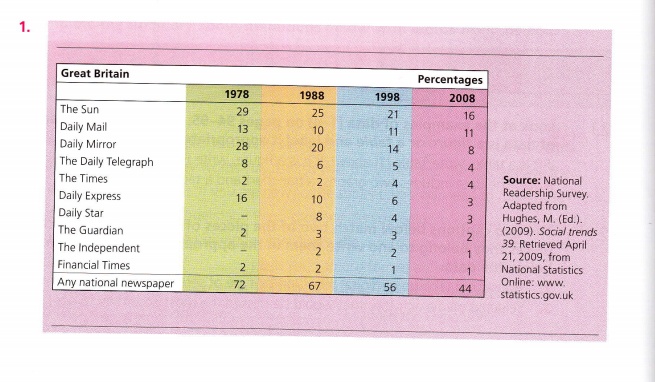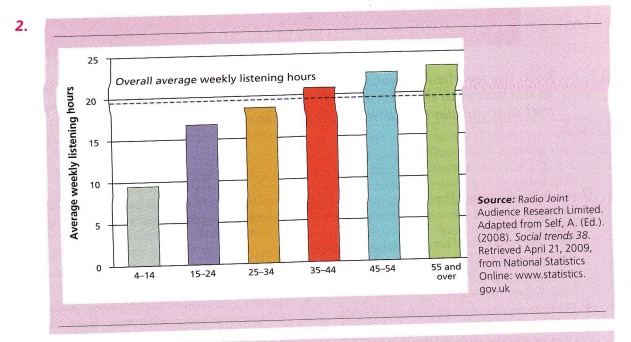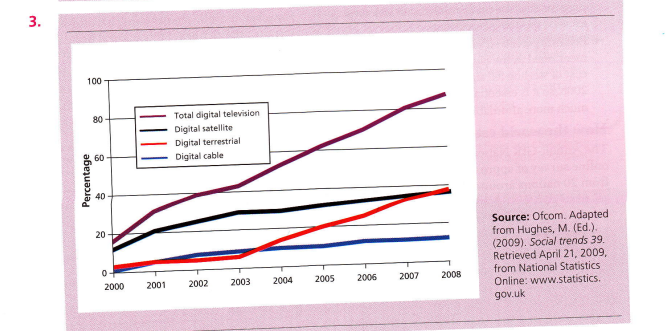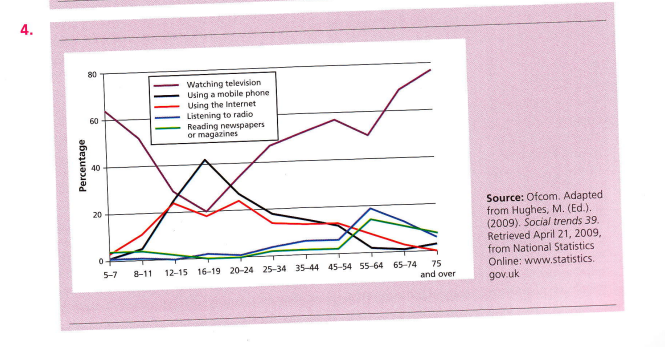Theme: Incorporating data and illustrations.
Objectives:learn how data are incorporated into academic texts; learn how to analyze data;
practise using the language of data commentary
Methodical instructions: This theme must be worked out during two lessons a week according
to timetable and its result can be achieved through extension the use of academic language in
speech activity: speaking, reading, writing and listening:
- The formation of listening skills can be developed when using a class video;
- The development of writing skills must be exercised through self-work tasks;
- Reading skills should be improved in course of working on training materials the content
of which is intended to be understood in full;
- Speaking skills can be developed through active communication on the Unit’s topics.
Listening:Watch a video “How to analyze your data and write an analysis chapter” on https://www.youtube.com/watch?v=bJBSQN-OkOQ
After watching this video answer the following questions:
1. What is the topic of the discussion?
2. What is a difference between flying in the analysis chapter?
3. Why is analysis chapter descriptive?
4. What is the key thing of analysis chapter?
5. What is the difference between analysis chapter and findings?
Another aspect of academic writing is data commentary. Data are statistical information that is presented graphically in the form of tables or figures; they are used to support the information and ideas of the academic researcher. Illustrations include a range of images such as photographs, screenshots and diagrams. In academic writing, illustrations should only be used to help clarifyideas or information; in other words, they should enhance an explanation. you should alwaysprovide thesоurсе of your data.
In this unit, you will look at data connected with digital media,visits to Вritаin and perceptions of Britain as a holiday destination.
Task 1. The purpose of data
1.1 Brainstorm the following questions in groups. Use your own knowledge аnd the information above.
1. What аrе data?
2. Why аrе data sometimes included in academic texts?
| Study tip Graphs аndсhаrts, (known as figures) and tables саn summarize key informationin а very concise way. |
Task 2. The language for incorporating data
2.1 Look at the examples of data (1-4) on pages37-38. Identify whether each piece of data is а figure or a table and label it appropriately.
lf it is а table, write Table [1] above. If it is а figure, write Figure [1] below.
Note:The data includes two graphs, а bar chart and а table.
2.2 The two captions below match two of the pieces of data. Identify which pieces they belong to and write them in the appropriate position above or below the data.
1.Householdtake-upofdigital televisionbytypeofservice.
2. Selected media activities thatwould be missed the most ассоrding to age, 2008
1.3 Now think of captions for the other two pieces of data and write them in the appropriate places.
1.4 Read the text below and add a reference to each place at a suitable place in the text.
In 2008 the ‘digital switchoer’ began. Data from ofcom (figure 2) shows that nearly 87 per cent of homes in the UK had a digital television service at the end of the first quarter of 2008, a rise of 71 percentage points since 2000. A digital television set can also transmit digital radio stations. According to Radio Joint Audience Research limited, the average time spent listening to the radio by people in the UK in the first quarter of 2007 was 19 hours and 24 minutes per week; average listening time increases with age. Between 2001-2002 and 2006-2007, radio listening fell among most age groups. The proportion of people reading a daily newspaper has also been declining for a number of years. The national readership survey shows that, on an average day, less than 44 per cent of people aged 15 and over in Great Britain read a national daily newspaper in the 12 months to June 2008, compared with 72 per cent in the 12 months to June 1978. In 2007, Ofcom asked which media activity respondents would miss the most if they were all taken away. Watching television would be the most missed activity for all age groups except those aged 16 to 19, who would miss the mobile phone the most.
Source: Adapted from Self, A. (Ed.). (2008). Social trends 38 and hughes, M. (Ed.). (2009). Social trends 39. Retrieved April 21, 2009, from National Statistics Online: www.statistics.gov.uk




Self-work task:
Incorporate data and illustrations into your research and analyze them. Use graphs and charts in your research
UNIT 13
Theme: Writing Conclusions
Objectives:learn how to write conclusions
Methodical instructions: This theme must be worked out during two lessons a week according
to timetable and its result can be achieved through extension the use of academic language in
speech activity: speaking, reading, writing and listening:
- The formation of listening skills can be developed when using a class video;
- The development of writing skills must be exercised through self-work tasks;
- Reading skills should be improved in course of working on training materials the content
of which is intended to be understood in full;
- Speaking skills can be developed through active communication on the Unit’s topics.
Listening:Watch a video How to write a conclusion on https://www.youtube.com/watch?v=pvs9IpA5O2s
After watching this video answer the following questions:
1. According to the speaker why do need a conclusion?
2. What is T –S- S?
3. How should we use Thesis in the conclusion part?
4. What should we summarize in the conclusion part?
5. What does Super So What mean?
6. How do you understand the main idea of the listened material?
